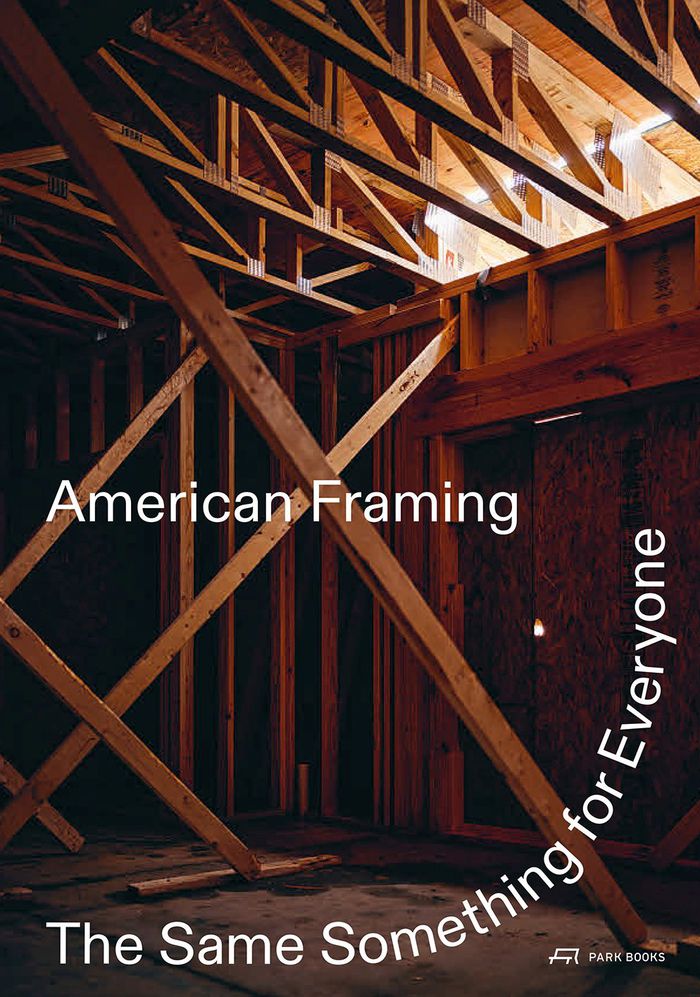$59.95
(disponible sur commande)
Résumé:
From its origins in the Midwest in the early nineteenth century, the technique of light timber framing—also known at the time as "Chicago construction"—quickly came to underwrite the territorial and ideological expansion of the United States. Softwood construction was inherently practical, as its materials were readily available and required little skill to assemble. The(...)
Constructions en bois
septembre 2023
American framing: the architecture of a specific anonymity
Actions:
Prix:
$59.95
(disponible sur commande)
Résumé:
From its origins in the Midwest in the early nineteenth century, the technique of light timber framing—also known at the time as "Chicago construction"—quickly came to underwrite the territorial and ideological expansion of the United States. Softwood construction was inherently practical, as its materials were readily available and required little skill to assemble. The result was a built environment that erased typological and class distinctions: no amount of money can buy you a better 2 x 4. This fundamental sameness paradoxically underlies the American culture of individuality, unifying all superficial differences. It has been both a cause and effect of the country’s high regard for novelty, in contrast with the stability that is often assumed to be essential to architecture. "American framing" is a visual and textual exploration of the social, environmental, and architectural conditions and consequences of this ubiquitous form of construction. For architecture, it offers a story of an American project that is bored with tradition, eager to choose economy over technical skill, and accepting of a relaxed idea of craft in the pursuit of something useful and new—the forming of an architecture that enables architecture.
Constructions en bois
$55.00
(disponible sur commande)
Résumé:
Being boring (or boringness) has been one of the qualities of architecture an architect desperately tries to avoid. Not to provoke (or at least try to provoke) some reaction from one’s audience is to admit to a lack of ideas or an absence of creativity. In ''Kind of boring,'' Paul Preissner rejects the idea that architecture should demand anything from its audience. The(...)
Kind of boring: canonical work and other visible things meant to be viewed as architecture
Actions:
Prix:
$55.00
(disponible sur commande)
Résumé:
Being boring (or boringness) has been one of the qualities of architecture an architect desperately tries to avoid. Not to provoke (or at least try to provoke) some reaction from one’s audience is to admit to a lack of ideas or an absence of creativity. In ''Kind of boring,'' Paul Preissner rejects the idea that architecture should demand anything from its audience. The ''boring and dumb'' architecture documented in this book leaves us alone. In this way, the work of Paul Preissner Architects produces a conceptual space, a meaning independent of our relationship to the work; we can only understand (or misunderstand) it. Through a lot of drawings, some essays, and many pictures, this book documents what happens when architecture stops begging for our attention and instead makes space for reflection.
Théorie de l’architecture

